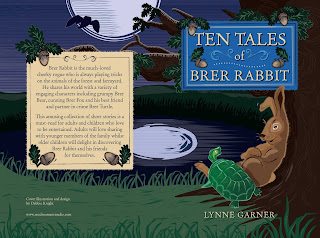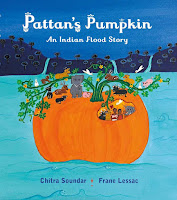Last year's Picture Book Den post on how to organise a "
Picture Book World Cup" in schools got such a good response that I thought I'd follow up with a similar post on how to run a
Picture Book Treasure Hunt.
Like the
Picture Book World Cup, this is an activity that I originally ran with my former
Patron of Reading school,
Asfordby Captain's Close Primary in Leicestershire. We did our treasure hunts in June, which meant we were able to run them outside, in the school grounds, but a hunt would work just as well inside. And it would make an ideal book-themed activity for the upcoming
World Book Day, which is why I'm blogging about it now!
 |
| A Captain's Close student discovers one of the question sheets. |
We ran two separate treasure hunts: a picture book themed hunt for Key Stage 1 and a novel themed hunt for Key Stage 2. I'm going to describe how to run the KS1 picture book version, but the KS2 version works in a similar way and
you can find information on it and links to download packs for both versions at the bottom of this post.
How the hunt works
The hunt is a race against time. The first student to complete it correctly wins. A winner's certificate is included in the download pack, but schools may want to offer a book as a prize as well.
Once they have completed the hunt, students will need to hand in their answer slip to a
Hunt Collector (a nominated member of staff), so
make sure all the students know who the Hunt Collector is and where they can be found before the hunt starts.
If the hunts we ran are anything to go by, the winner is more likely to be a tortoise than a hare.
Make it clear that the winner is the first student to hand in a CORRECTLY COMPLETED answer slip. The twentieth student to hand in their slip could still be the winner if the previous nineteen have not completed the hunt correctly!
It will take a little time to check the answer slips, so let the students know when the winner will be announced. If you're running the hunt in the morning, you might tell the students that the winner will be announced in an afternoon assembly.
The hunt uses a set of ten multiple choice question sheets like this one:
The question sheets are stuck up in different locations around the whole of the school.
Before the hunt starts, make sure students know where they can and where they cannot look.
Students all start the hunt at the same time, but in any place, with any sheet. It makes sense to split students up as much as possible at the start so they begin in lots of different locations. That way, they will not all be looking for the same question sheet at the same time.
Each student is given an answer slip like this:
When a student finds their first sheet, they write down the big letter at the top in the first square of their answer slip. Then they read the question and decide which of the four book covers at the bottom of the sheet is the correct answer. Then the student has to find another sheet that has that book cover at the top and repeat the same process.
Students should be able to answer the questions in the KS1 hunt in the download pack by looking at the books' covers. Remind students that if they have a problem reading or understanding a question, they can ask a teacher for help.
As students search for the question sheet with the correct cover, they will probably spot other question sheets that they will need to find later on in the hunt, so students should try to remember where each sheet is, even if it's not the one they're currently looking for.
When a question leads a student back to the question sheet they began with, they should have a letter in each of the 10 boxes. They have now finished the hunt and should hand in their answer slip to the Hunt Collector straight away!
The first student to hand in a correctly completed answer slip to the Hunt Collector wins.
Tips for the organisers
Example question sheet: Before starting the hunt, use the example question sheet in the download pack to explain how the hunt works and what students have to do.
Synchronise the start: Agree an exact start time for the hunt, then split the students into small groups and ask a member of staff to accompany each group to a different part of the school to start the students at that time.
Leave time to find the winner: If the hunt we ran is anything to go by, the first students to hand in their slips will have got their letters in the wrong order and you will have to check through several incorrectly completed slips before finding a correctly completed winner.
When you announce the winner (preferably in an assembly), you might want to spread the credit and heighten the tension by revealing the top three hunters in reverse order. If the school is feeling generous, they could give a prize to the runners-up too.
Tips for the Hunt Collector
Don't worry about marking the answer slips as they come in! The important thing is to keep a record of the order you receive them. So
write a number in the top box in the top right corner of each slip as it is given to you.
The first few students to give you their answer slips will probably have filled them in incorrectly, so keep collecting the slips and recording the order you receive them in until you've collected them all or until the time programmed for the hunt is over.
Once you've collected all the answer slips, you can use the long
marking strip in the download pack to check the sequence on each slip quickly. Starting with the first answer slip to be handed in, line up the first letter on the slip with the first occurrence of the same letter on the marking strip. If the student has completed the hunt in the right order all of the following letters will match those on the marking strip.
 |
| Use the long marking strip to check the sequence quickly, by lining up the first letter on the student's sheet with the same letter's first appearance on the strip. |
If the sequence of letters on the first slips you check don't match the sequence on the marking strip exactly, put a cross where the sequence is broken. It's worth keeping rejected slips in the order they were collected in as,
in the event that no student gets the whole sequence right, you will need to go back through the slips and pick out a winner with the longest correct sequence.
Once you've found the winner you can fill out the certificate in the download pack and present it to them.
Foundation and Reception Simplified Option
Foundation and reception students can do an easier version of the hunt by simply finding all the question sheets and writing down all the letters. The winner is the first student to hand in a slip with all the correct letters
in any order.
Hunt the Teacher Option
The download pack contains an
off the peg version of the hunt that will work in any school. However, the original hunts we ran included extra questions about teachers' favourite books, as shown in the example below.
 |
Additional Hunt the Teacher question sheets like this get
students talking to teachers about their favourite books. |
To answer this question, students had to find the teacher and ask them which book was their favourite. This was a good way to show children that grown-ups enjoy reading and to get the students talking to staff about their choices. If you want to create your own version of the hunt using this option, you will need to ask staff to name their favourite books in advance so they can be written into the hunt. And if a staff member is unexpectedly away on the day (as was the case with one of our hunts), make sure another staff member knows the correct answer and that the students know who this is before they start the hunt.
Key Stage 2 Version
A download pack for an
off the peg Key Stage 2 version featuring children's novels is also available below. This runs in exactly the same way as the KS1 version, but has the following tweaks to make it a little more difficult:
- There are 15 questions instead of 10.
- While the answers to some questions can be found by looking at the covers, others require a little knowledge of the books.
- On some question sheets, more than one of the covers at the bottom of the sheet can be found at the top of other sheets, so students can't just go looking for any of the four options like they can in the KS1 hunt - they need to find the sheet with the correct cover to get the correct sequence of letters. If students get back to the sheet they started with and haven’t got a letter in all 15 of the boxes, they will probably have skipped a few letters by answering a question incorrectly.
And of course, you can create your own KS2 hunt with some hunt the teacher question sheets just like the ones described for the KS1 version above.
Click on an image below to download a Treasure Hunt pack as a zip file.
Key Stage 1
Key Stage 2
For some more ideas for activities your school can do to celebrate World Book Day,
 For an exciting picture book race against time, check out Jonathan's rhyming romp The Silver Serpent Cup, illustrated by Ed Eaves, and published by Oxford University Press.
Find out more about Jonathan and his books at his Scribble Street web site or his blog. You can also follow Jonathan on Facebook and Twitter @scribblestreet.
For an exciting picture book race against time, check out Jonathan's rhyming romp The Silver Serpent Cup, illustrated by Ed Eaves, and published by Oxford University Press.
Find out more about Jonathan and his books at his Scribble Street web site or his blog. You can also follow Jonathan on Facebook and Twitter @scribblestreet.
See all of Jonathan's posts for Picture Book Den.













